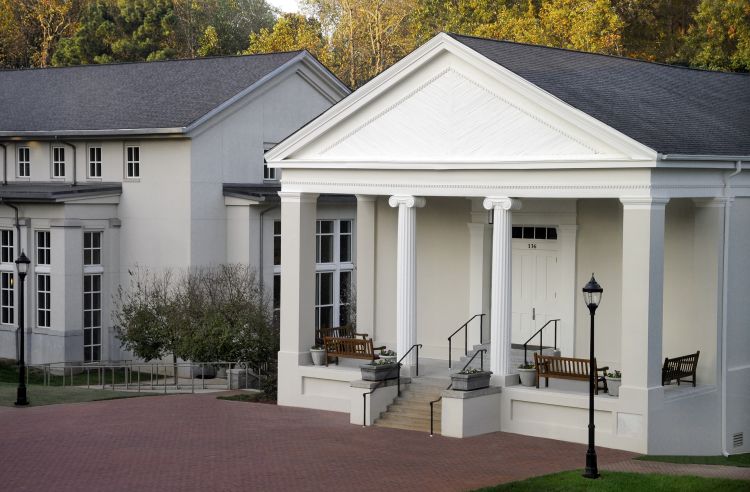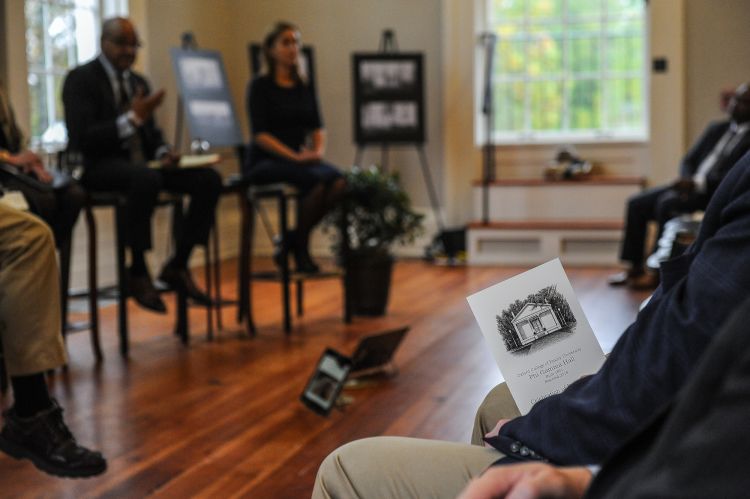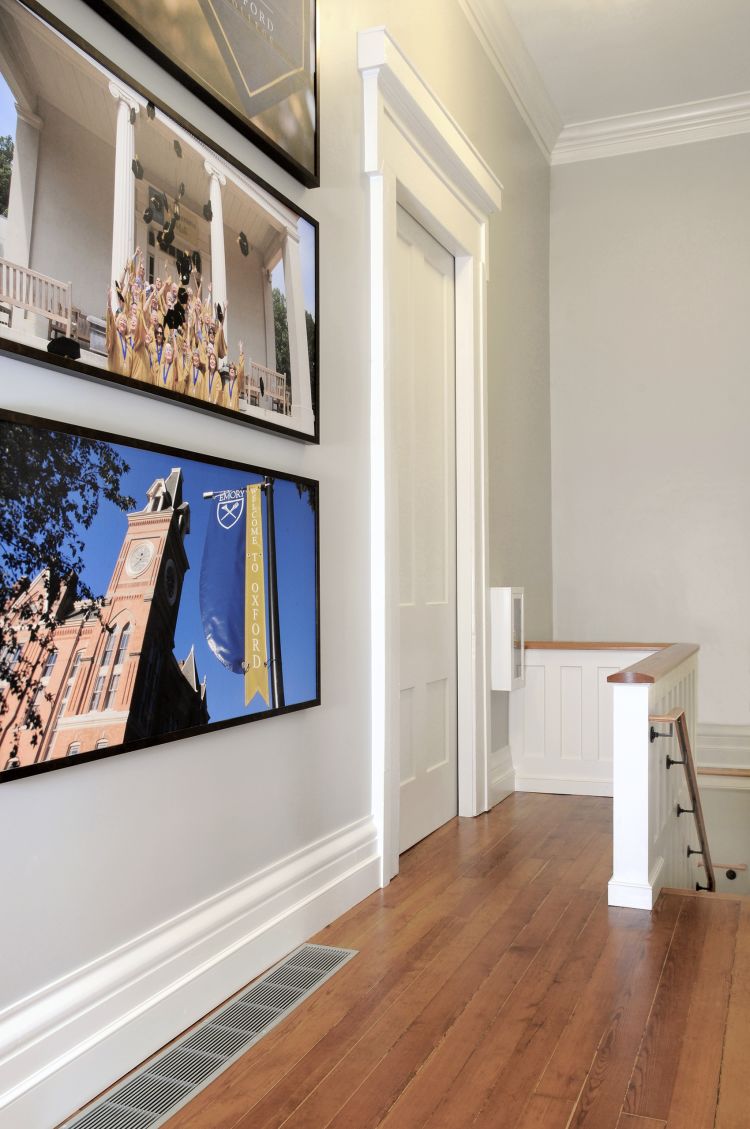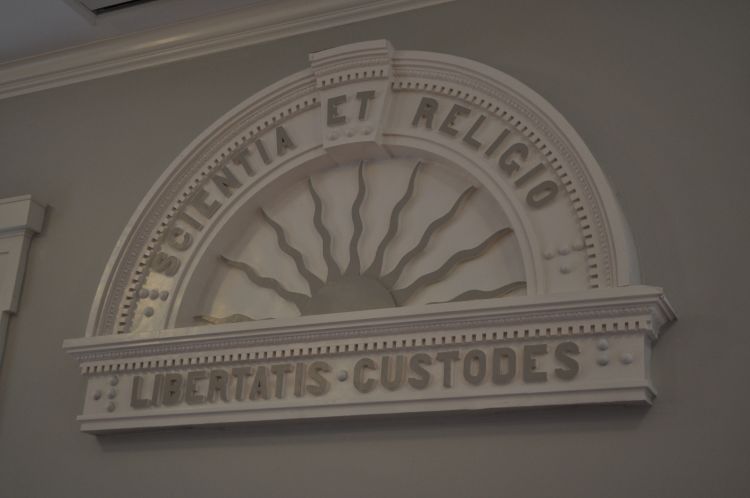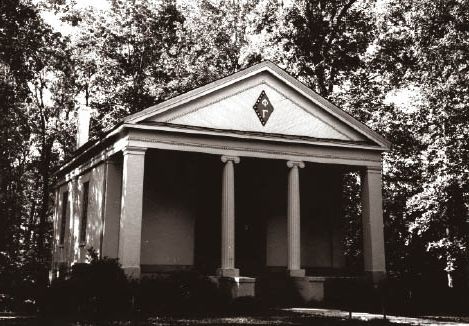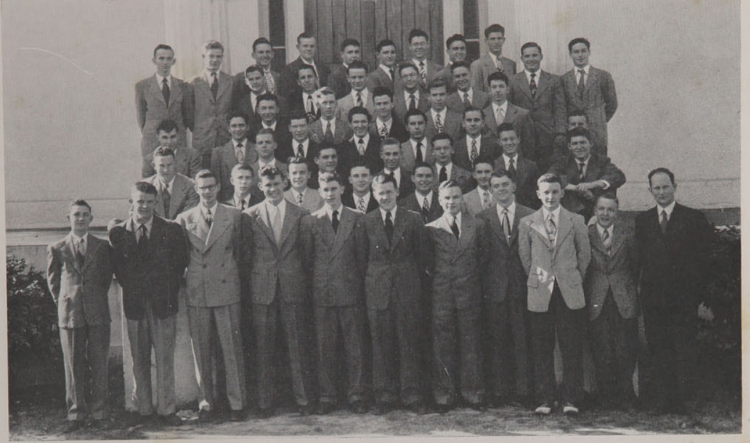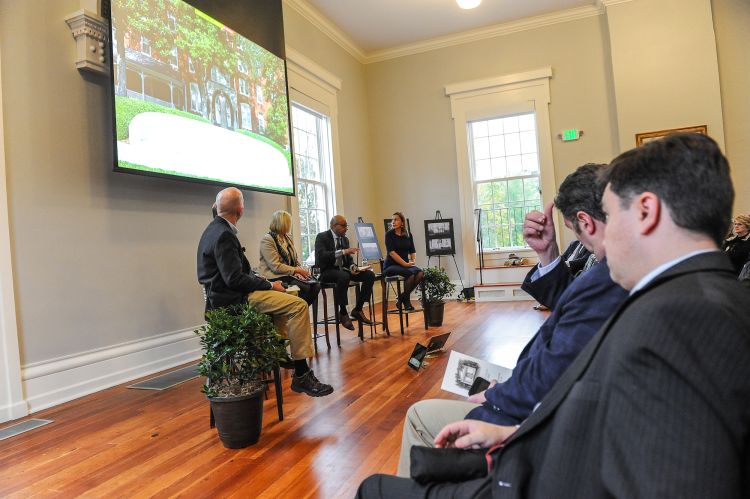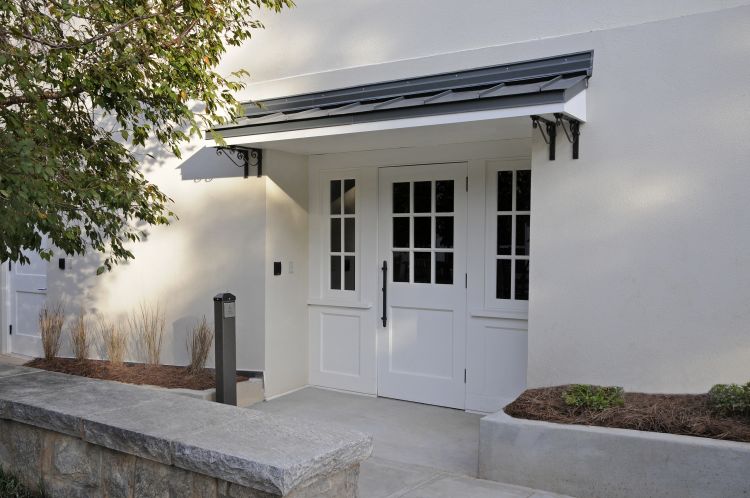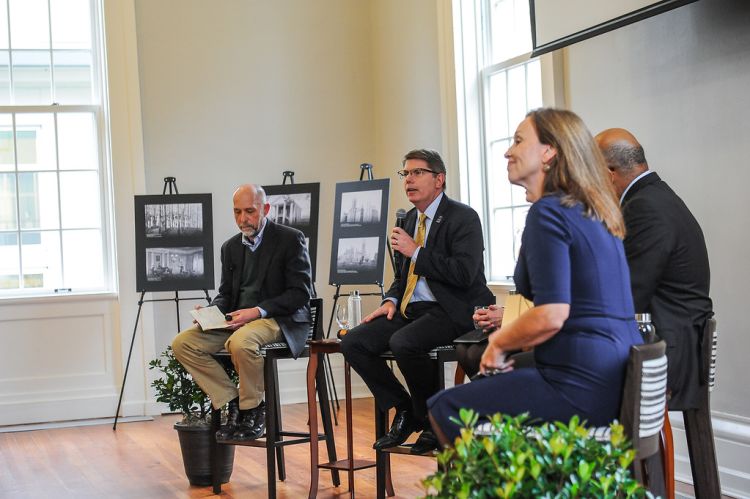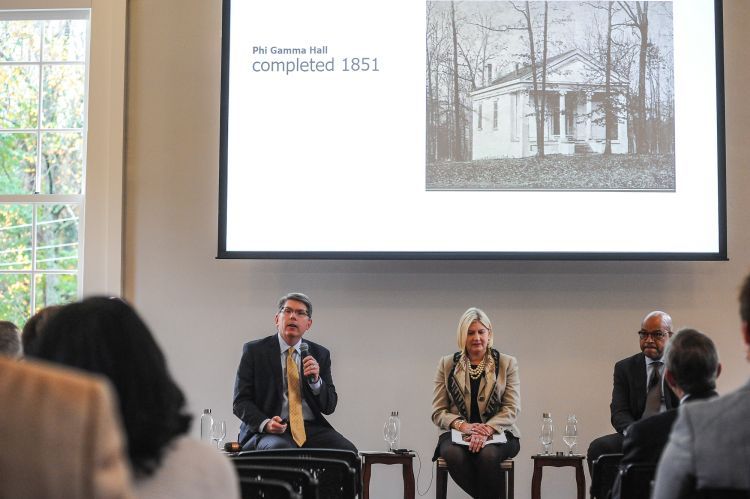Phi Gamma Hall
Oxford celebrates the recently completed renovation of Emory’s oldest academic building
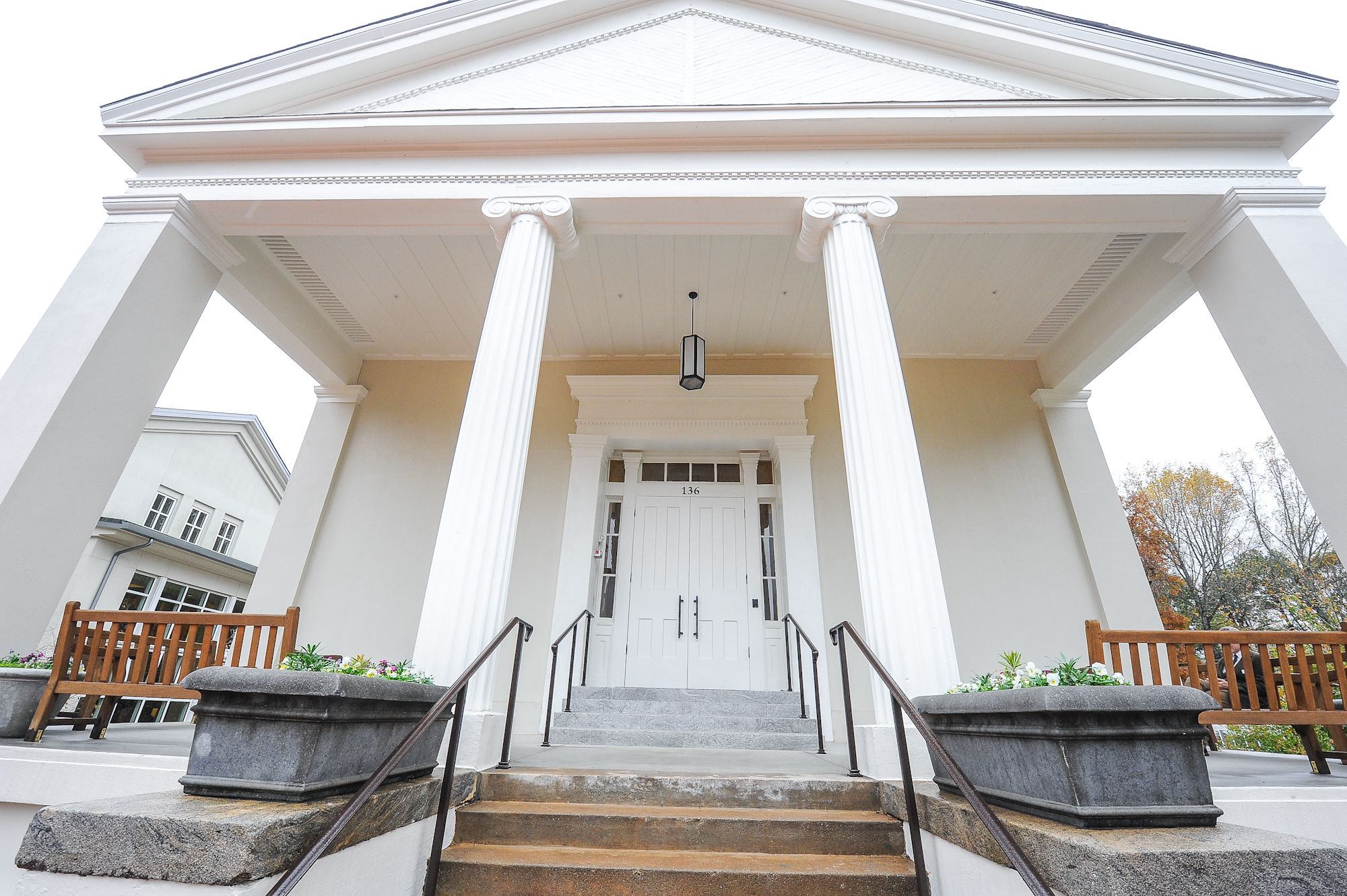
In the 167 years since it was built as a space for debate-society meetings, Phi Gamma Hall has taken on many looks and played many roles in the history of Emory. Now, after extensive renovation, the elegantly plain building anchoring the northwest corner of the Oxford College quad has still another incarnation, this time as a space dedicated to academic and public events.
Oxford College recently celebrated the completed renovation. The process gave prime importance to the historic significance of the building and its finishes while also giving an eye to technology and furnishings that would make it a useful and relevant space for contemporary needs.
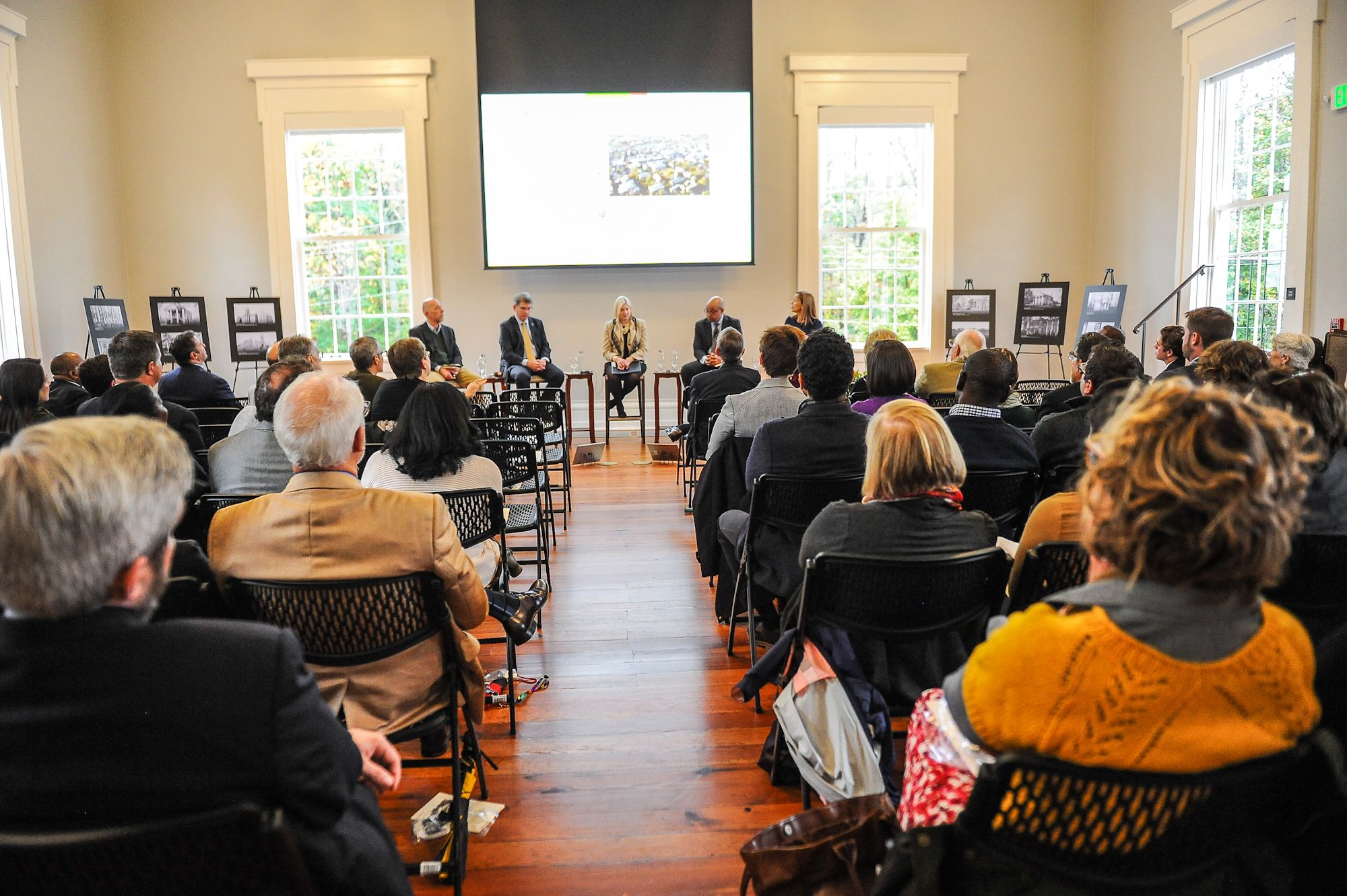
“We have taken care and attention to ensure that Phi Gamma’s structural integrity and usefulness extend well into the future,” says Doug Hicks, dean of Oxford College. “Most of all we are delighted that this historic building will once again be an eminent space for public conversation and the exchange of ideas.”
Phi Gamma is Emory University’s oldest academic building, built when Emory College was located on its original campus in Oxford, Ga., almost 70 years before its move to Atlanta in 1919. Student and alumni members of the Phi Gamma Literary Society began raising funds for its construction as early as the 1840s. The building’s white-marble cornerstone commemorates their efforts with a Latin inscription attesting that the Phi Gamma Society was established in 1837 and that the cornerstone was laid on February 22, 1851.
Phi Gamma Hall has a simple, temple-like exterior design, featuring a raised portico with two outer Doric columns and two intermediary Ionic columns. The structure is primarily brick overlaid with stucco.

The entrance from the portico to the foyer features two nine-foot doors flanked by side and transom windows. The central room’s large windows are placed on the north, south, and west walls, giving the space beautiful natural light throughout the day. Two massive, nearly twelve-foot doors open from the foyer to the central space.
The main room, which served the Phi Gamma Literary Society’s meetings, has its original heart-pine floors, plaster walls, and two opposing cast-iron fireplaces.
"For a long time I and many others have looked at Phi Gamma Hall and seen its inherent beauty and its potential as an important space for our campus. Through the vision and hard work of many, it has reached the potential we all foresaw, and it has been restored to elegance and relevance."
--Oxford Dean Doug Hicks
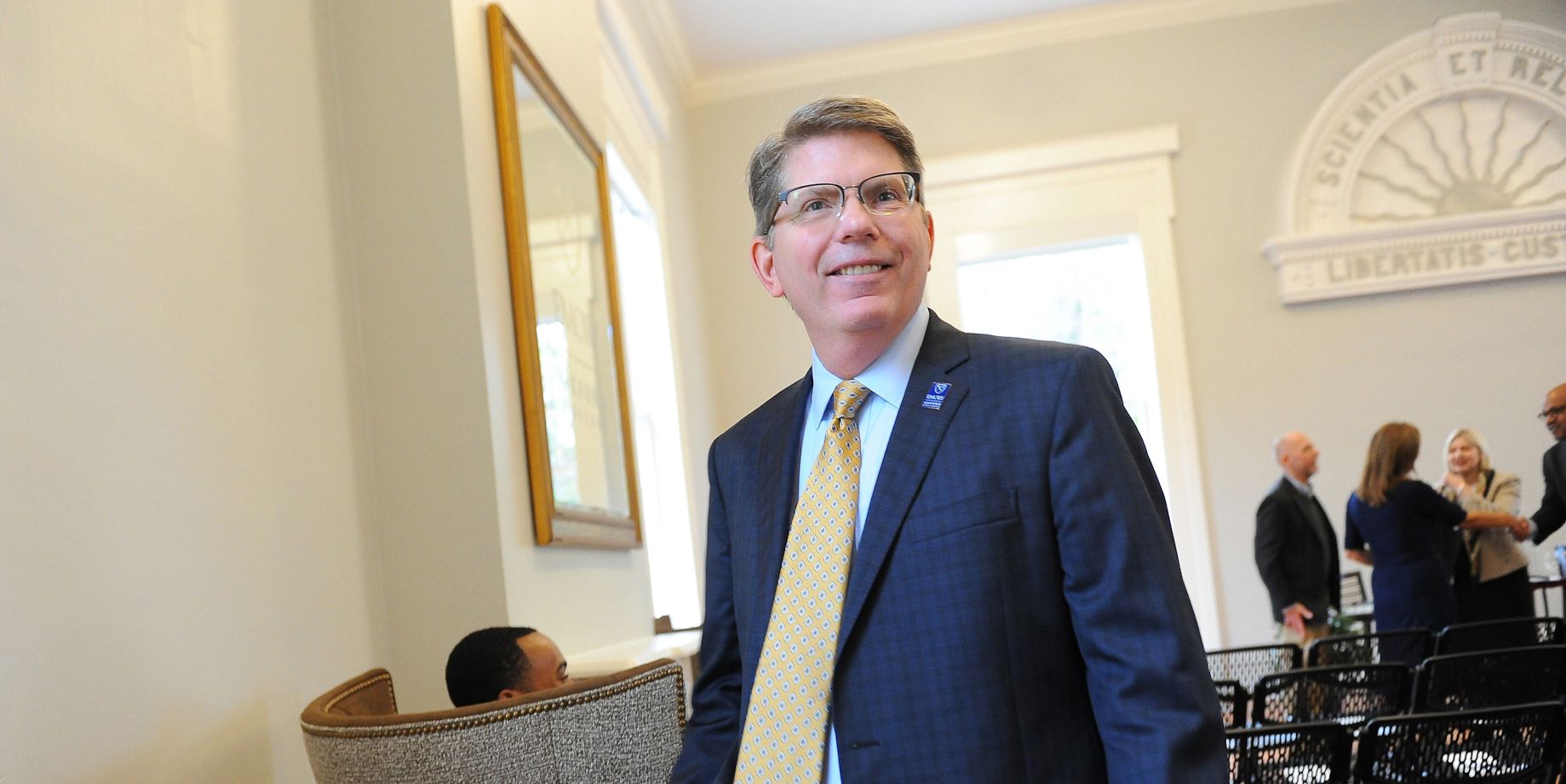
On the west wall hangs a large, pressed-metal ornamental arch, added around 1886 and bearing the society’s motto, “Scientia et religio libertatis custodes,” in Latin translated as “Science and religion are the guardians of freedom.”
During the planning and drawing up of specifications for the project, Smith Dalia, the Atlanta architectural firm that designed the project, determined that Phi Gamma Hall’s design is a golden rectangle; i.e., a rectangle whose side lengths are in the golden ratio of 1.618. Fittingly, mathematicians refer to this as Phi. Many classic buildings from the Pyramids to Notre Dame Cathedral to the Taj Mahal are also designed as golden rectangles.
While the building’s original use was as a debating hall for the literary society, it has served a variety of other purposes since 1851.
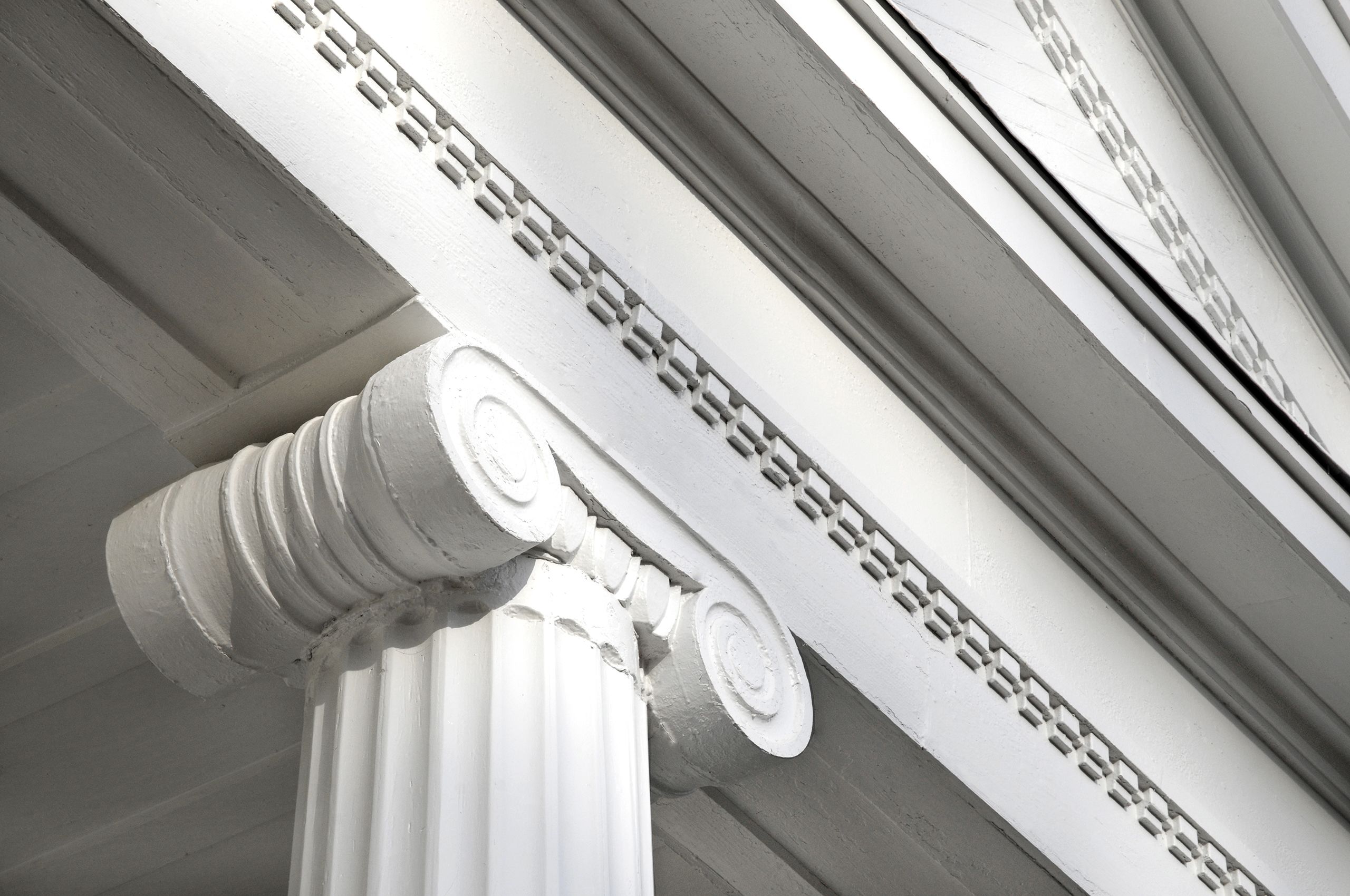
Emory College closed during the Civil War, and in 1864 both Phi Gamma Hall and Few Hall, the building across the quad housing the rival Few Literary Society, served in the care of Confederate wounded brought to the Covington area following the Battle of Atlanta. (An often-told Oxford legend holds that the ghost of a Confederate nurse is sometimes seen outside Phi Gamma Hall.)
About 1948 Phi Gamma’s central room was restored and made into a small auditorium, which was also the scene of dances in the 1940s and 50s. In 1980 it became a black-box theater and the college’s main venue for dramatic and other performances until 2003 and the completion of the Tarbutton Performing Arts Center, located across the quad from Phi Gamma and attached to Few Hall. Not wanting to leave Phi Gamma vacant, the college designated it as a 24/7 student study space, keeping that purpose until late 2017 and the start of the current restoration.
With the project’s completion, Phi Gamma Hall has come full circle as an academic building, dedicated again as a place for public discourse. It now shines aesthetically: The large historic windows are refurbished and the heart-pine floor and lath-and-plaster walls are restored. Etched and bronzed mirrors hang over the fireplaces, and the foyer features photographic elements celebrating Oxford’s place and history.
Phi Gamma Hall also shines in technology and design that open it to more persons and more types of events. For the first time it has restrooms and an elevator, making it accessible to all abilities. The ground level, previously a partially finished storage area, features Lithonia-granite floors, a caterers’ staging area, and windows that add natural light.
Beautiful wood stairs lead up to the main, second-floor area, outfitted with the latest audio and presentation technology, all of it artfully concealed so it does not detract from the room’s beauty and simplicity.
A Nov. 13 reopening event began with a colloquium focused on the question, “Does a sense of place matter on college campuses?” The panel was moderated by Lawrence Biemiller, senior writer for The Chronicle of Higher Education. Participants included Hicks; Sonia Hirt, dean of the College of Design and Environment at the University of Georgia; David Thomas, president of Morehouse College; and Leocadia Zak, president of Agnes Scott College.
“This project honors the history of Phi Gamma Hall and its initial use as a debate hall. But in a world where thoughtful, respectful debate seems all too uncommon, our reopening of Phi Gamma Hall also celebrates the principles of free speech and academic and intellectual freedom."
--Oxford Dean Doug Hicks
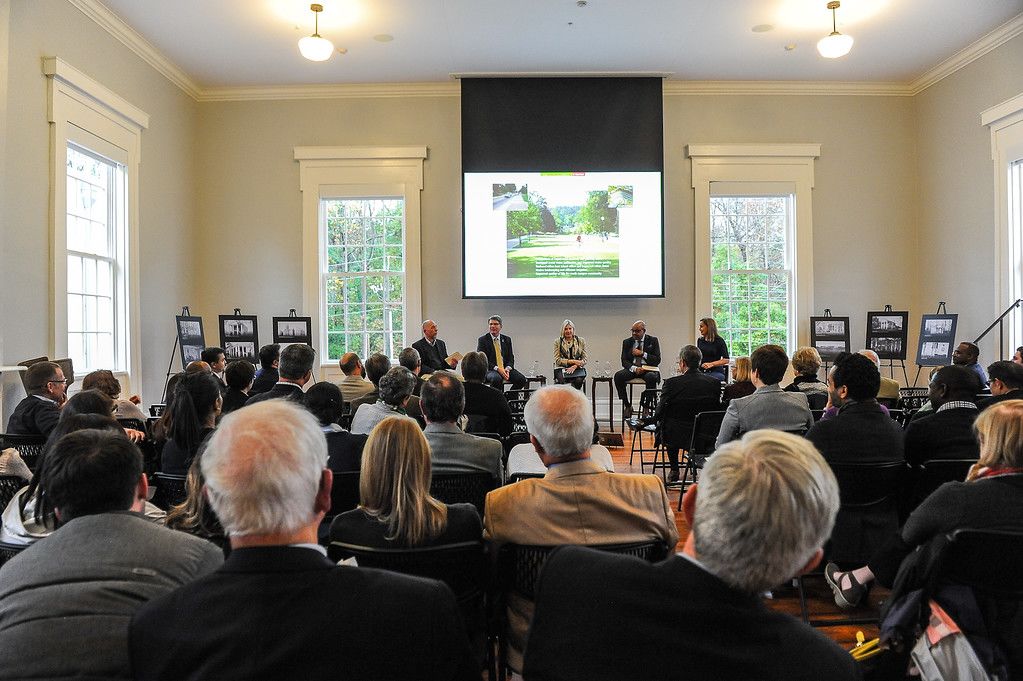
Emory University Provost and Executive Vice President of Academic Affairs Dwight McBride offered dedicatory remarks, followed by a reception attended by faculty, staff, and students.

